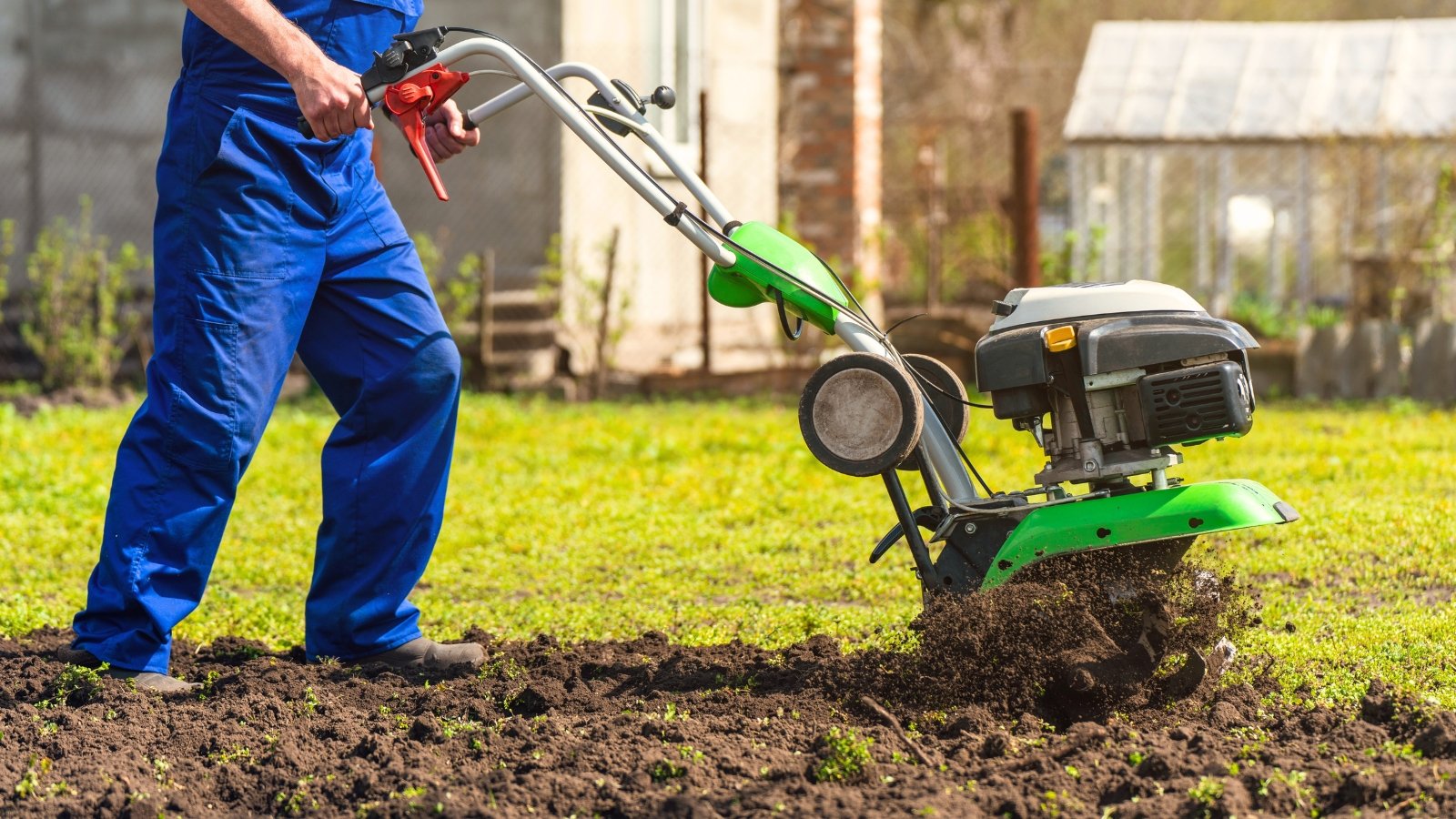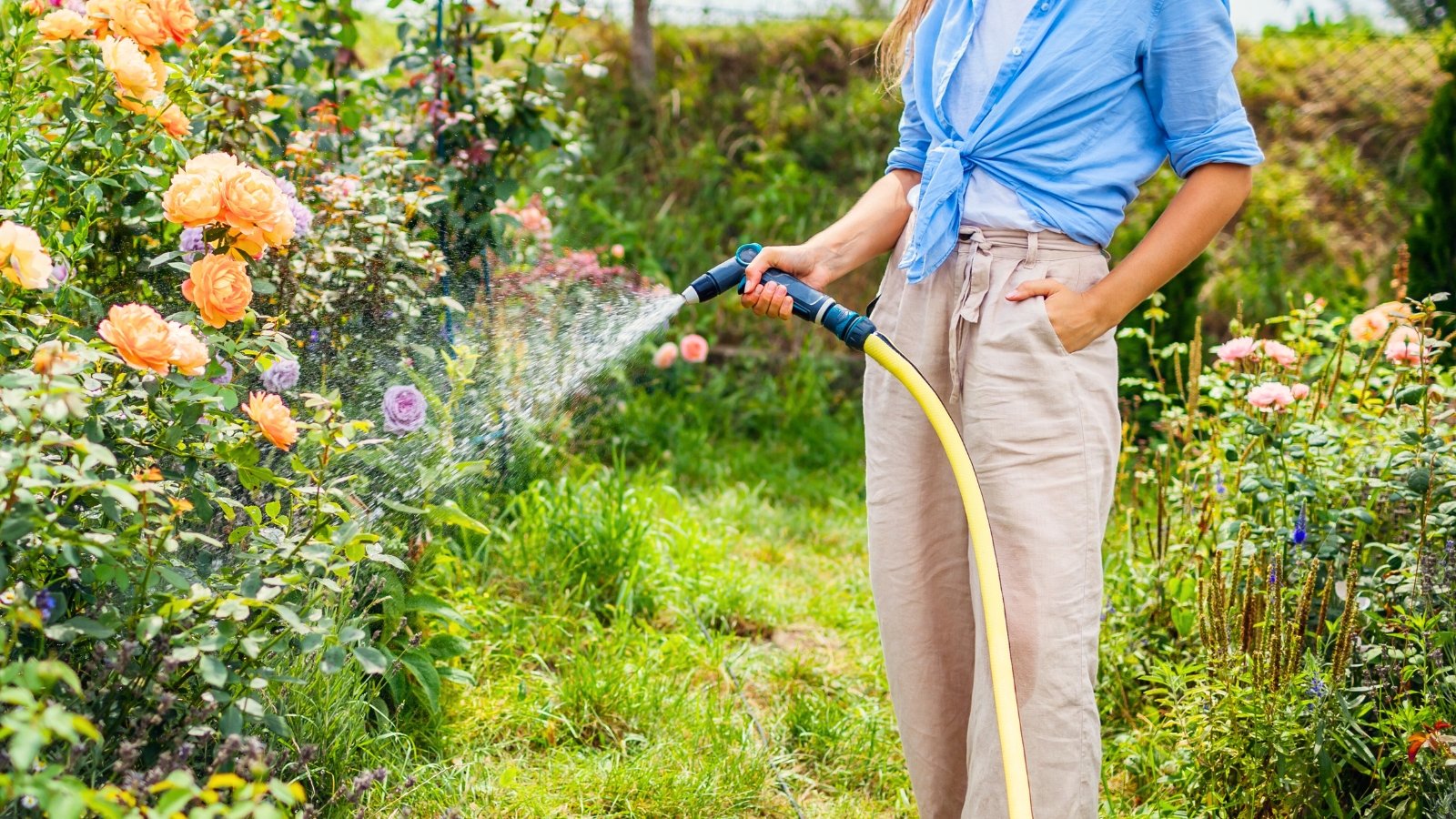PROTECT YOUR DNA WITH QUANTUM TECHNOLOGY
Orgo-Life the new way to the future Advertising by AdpathwayWhether you learned how to garden from your grandparents, the internet, or a few books, you’ve probably heard a few rules you should always follow. There’s no arguing that some of these help us grow beautiful and productive gardens, but sometimes you should break garden rules.
Some garden rules have a little bit of wiggle room. For example, many gardeners say you shouldn’t plant frost-sensitive crops until after your average last frost date. This is often true, but if you have an unusually warm spring or access to a protected structure, you may be able to put your tomatoes in the ground a few weeks earlier.
Other rules are outdated and ripe for challenging. Check out this list of often-heard mandates and reasons why you may want to break these garden rules.
Keep Edible and Ornamental Plants Separate
 Mixing flowers and food helps keep pests guessing.
Mixing flowers and food helps keep pests guessing.You may have heard that you need to keep cutting flowers, ornamental shrubs, and edible plants in separate sections of your yard or garden. Heck, we even keep them in separate sections on our website. And while it’s helpful to classify plants to simplify planting, care, and disease prevention, you should break this garden rule.
Edible landscaping has been the rage in the past decade, with gardeners planting peas and flowering berry bushes in their front yards and ruffled lettuce heads in their window boxes. Not only do these edible plants add diversity and beauty to landscapes, but they also provide us with food just outside our doors.
If you want to try out edible landscaping, try mixing a few kale plants into your spring flower beds, or add a fruit tree to your front yard to provide shade and sweet treats. You can also train climbing plants, such as peas, cucumbers, and melons, to climb up arbors and fences while creating stunning living structures.
Mixing ornamentals into traditionally edible landscapes also has its advantages. Small flowers like yarrow and sweet alyssum provide pollen and nectar for natural predators like hoverflies, parasitic wasps, and green lacewings. When these good bugs have food, they’re more likely to stay in your garden and lay their eggs near pests like aphids and thrips. The resulting larvae attack the pests, providing ecological control and allowing you to forgo chemical options.
Ornamentals also help with crop rotation. Many edible crops fall within a few plant families, so adding flowers can help you break up repeated plantings of brassicas, cucurbits, and solanaceous crops.
Place Tall Plants in the Back
 Tall stems create shady spots for low-growers to thrive.
Tall stems create shady spots for low-growers to thrive.Traditional garden design often suggests planting rows of plants, with tall species in the back and short ones in the front. The end result is a landscape with slowly descending layers. While there’s nothing wrong with this neat approach, I love to break this garden rule.
Mixing tall and short plants creates an interesting garden that prompts your eyes to jump between different heights, textures, and colors. When you combine plants like coneflower, rudbeckia, coreopsis, blazing star, and little bluestem in a pocket prairie, you end up with a garden that’s as beautiful as it is ecologically beneficial. The array of plants provides food for insects and birds, and the various plants create nooks and crannies that are key wildlife habitats.
Mixing vegetation of different heights also allows you to experiment with plants that have varying light requirements. Tucking shorter, shade-loving plants below taller sun-loving species allows you to enjoy the best of both worlds. Note that the tall plants may take some time to leaf out and provide shade.
Till Your Garden Each Spring
 Minimal tillage keeps nutrients where roots can actually use them.
Minimal tillage keeps nutrients where roots can actually use them.In some areas, the first dry and warm stretch of spring is a sign to break out the tiller or call up a friend to bring over their equipment. No-till practices have risen in popularity in recent years, and some farmers and gardeners now equate tillage with destruction. Tillage sometimes has its place, but you should consider whether churning the ground will benefit or harm your garden before you fire up your machine.
Oftentimes, we turn to tillage to make the soil easier to plant into. After all, nobody wants to dig into rough ground, and plant roots don’t want to fight their way through the soil. Utilizing mulches, growing healthy plants, and planting cover crops can help improve soil structure, allowing us to easily plant into the soil without the need for tillage.
Tillage also helps incorporate green manures and fertilizers, so people often view it as an essential part of incorporating spring-killed cover crops. Incorporating cover crop residues into the soil does speed up the release of nutrients, but it can also lead to the nutrients exiting through the soil before plants use them. Terminating cover crops as part of a minimal tillage system can help limit nutrient loss.
Skipping tilling in the spring also makes it easier to get into the garden. You should never till wet soil, so a rainy springs make it challenging to get into your garden. Skipping spring tillage means you can plant even during damp weather.
A Green Lawn Equals a Healthy Landscape
 Swapping grass for herbs means fresh flavor steps away.
Swapping grass for herbs means fresh flavor steps away.When you think of the iconic middle-class, suburban home, a green lawn falls just behind a white picket fence. But gone are the days when a tidy monoculture of green grass was synonymous with a healthy landscape and caring homeowners.
Traditional grass lawns are monocultures that provide few benefits to the surrounding ecosystem. The grass prevents erosion and helps soak in rain, but it offers little shelter and food to wildlife. Replacing a bit of your lawn with a garden can benefit insects, birds, and reptiles while also helping your pocket.
I just replaced a section of my Tennessee yard with an array of native grasses, shrubs, and flowering perennials. I’ve already noticed an uptick in the diversity and number of insects, and more birds are visiting. As the plants grow, I’m sure they will continue to offer a welcome stopping point for critters traversing my urban neighborhood.
Transitioning a section of your garden to an herb garden or vegetable patch increases the diversity while also providing you with food to eat. You can walk out the door to pick a few sprigs of basil and cilantro and maybe even share some extra tomatoes with neighbors.
Never Water Midday
 Pulse watering soaks in better and saves more water.
Pulse watering soaks in better and saves more water.You may have heard that it’s best to water in the morning or evening rather than midday. And while watering when the sun is low leads to the lowest levels of water loss, watering in the afternoon is sometimes helpful.
People often view plants like lettuce and kale as cool-weather crops. And while they’re certainly easier to grow during cool periods, some gardeners like to try growing them in the summer. Cooling the crops is essential for limiting the plants’ stress, and misting during the afternoon is one of the best ways to cool them down. You’ll still need to water deeply at other points to keep the soil moist, but these brief cooling sessions will keep the plants from bolting.
Pulse watering is another method that encourages you to break this garden rule. This method involves applying short, frequent bursts of irrigation rather than a single, prolonged irrigation event. Pulse irrigation helps the soil absorb water while limiting runoff and evaporation. It’s especially beneficial for crops with shallow root systems.


 1 week ago
15
1 week ago
15





















 English (US) ·
English (US) ·  French (CA) ·
French (CA) ·